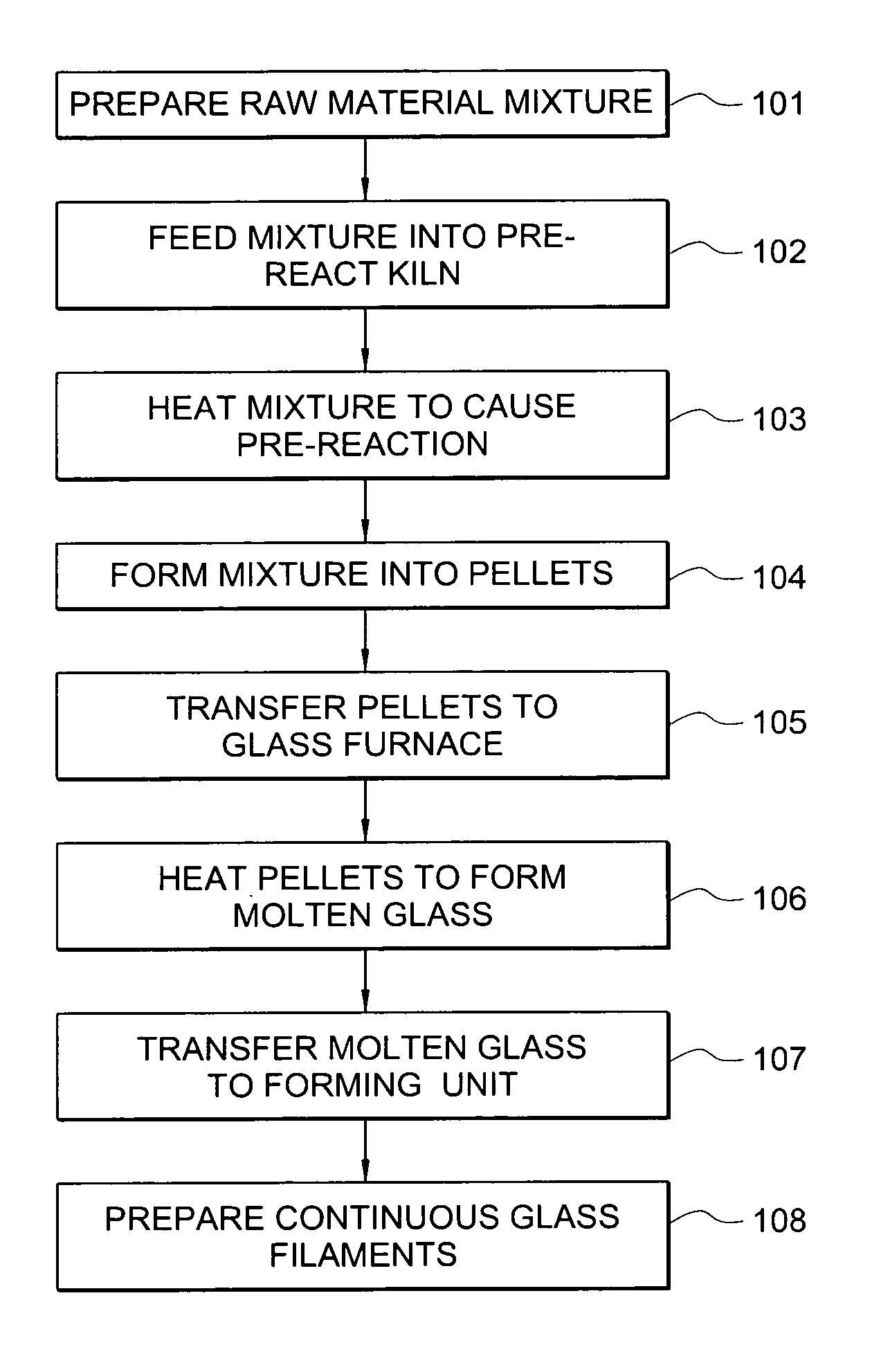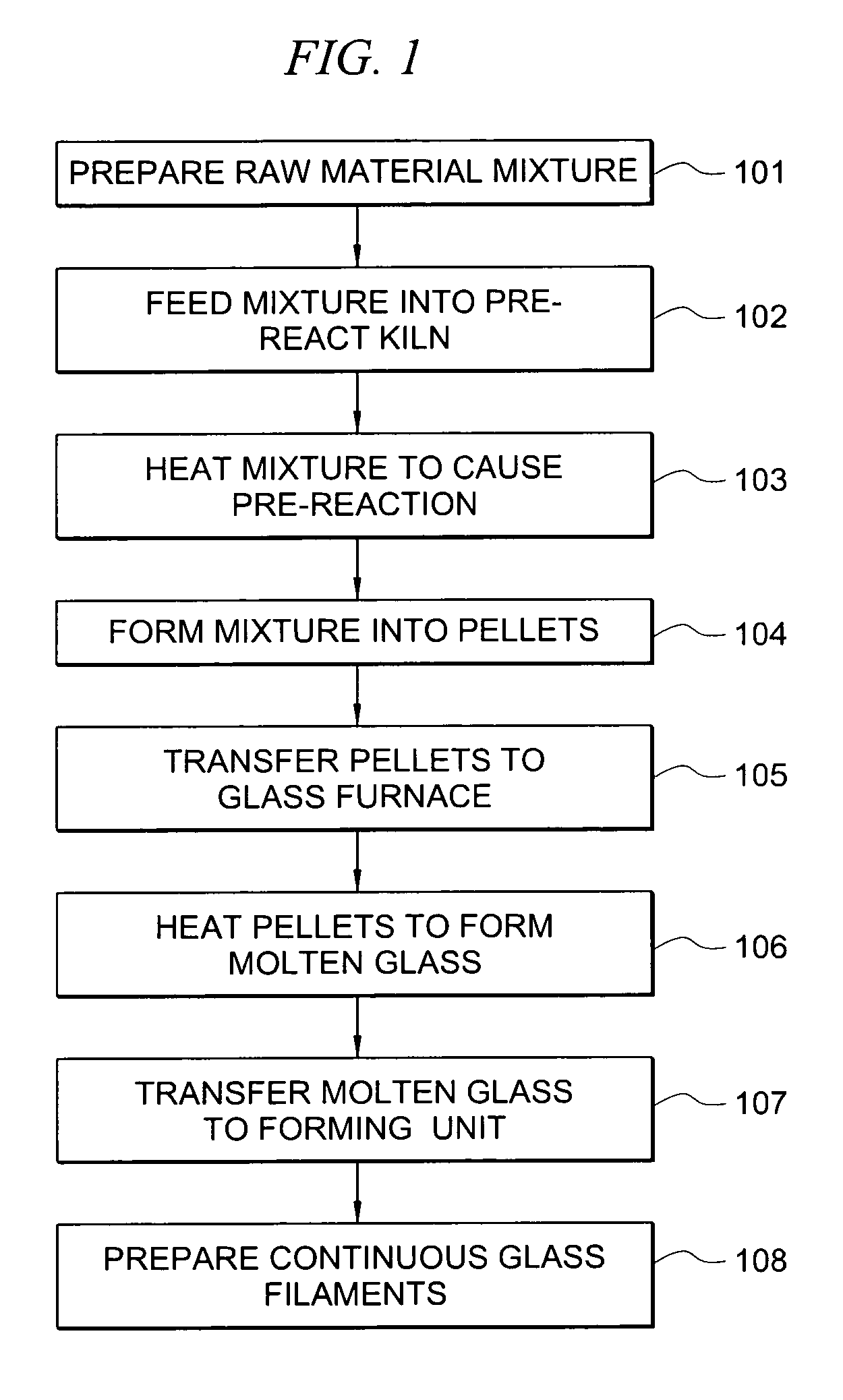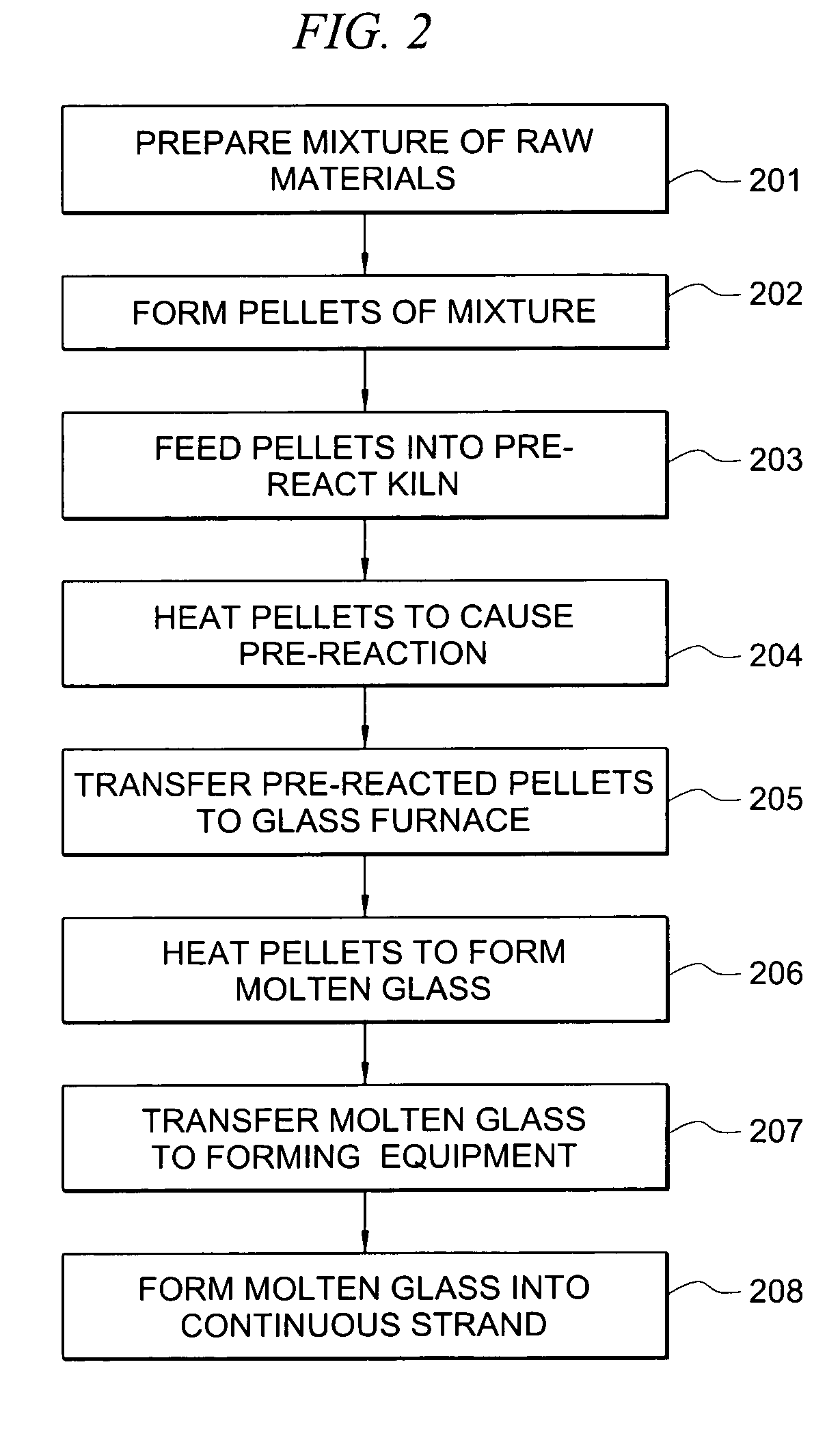Use of pre-reacted cements as raw material for glass production and the manufacture of fiber therefrom
a technology of pre-reacted cement and glass, which is applied in the direction of glass rolling apparatus, glass making apparatus, manufacturing tools, etc., can solve the problems of lower glass quality and high energy cost, and achieve the effects of shortening the residence time, lower glass quality, and high energy cos
- Summary
- Abstract
- Description
- Claims
- Application Information
AI Technical Summary
Benefits of technology
Problems solved by technology
Method used
Image
Examples
example 1
[0026]A simple glass “clinker” was prepared by intimately blending equal molar amounts of 200 mesh limestone and 325 mesh quartz (37.5 wt % SiO2, 62.5 wt % CaCO3) and placing into a vitreous silica crucible. The crucible was heated to 1000 C for four hours, removed and then cooled to room temperature. The calcined batch was removed from the crucible and analyzed by x-ray diffraction to determine the identity of the crystalline phases present and their approximate amounts. The material was further crushed to a particle size of 150 mesh, suitable for delivery to a glass furnace, and evaluated by optical and scanning electron microscopy to determine the physical makeup of each particle and the form of the individual components comprising the particles.
[0027]Results from x-ray diffraction indicated that, predictably, all of the limestone had decomposed to form lime (CaO), the carbonate component being driven off as carbon dioxide. Although, much of the quartz remained unreacted, up to 5...
example 2
[0028]A more complex glass “clinker” was prepared by blending equimolar amounts of limestone and quartz as described in Example 1 together with a small amount of borax (sodium borate) to produce a bulk composition with the chemistry 50.9 wt % SiO2, 47.5 wt % CaO, 1.3 wt % B2O3 and 0.4 wt % Na2O as defined within the compositional boundaries of Table 1. This mixture was then heated to 1000° C. for four hours as done previously, removed and cooled to room temperature. The calcined batch was then removed, crushed and analyzed as described in the previous example.
[0029]X-ray diffraction results showed that in this example, over 50% of the quartz had reacted to form a mixture of calcium ortho and metasilicates (larnite and wollastonite). In addition some of the lime had reached with the borax to form a calcium borate (Ca3B2O6). Lime (from decomposition of limestone as in Example 1) and residual quartz comprised the remainder of the batch. Microscopial analysis of the crushed pellets show...
PUM
| Property | Measurement | Unit |
|---|---|---|
| temperature | aaaaa | aaaaa |
| temperature | aaaaa | aaaaa |
| temperature | aaaaa | aaaaa |
Abstract
Description
Claims
Application Information
 Login to View More
Login to View More - R&D
- Intellectual Property
- Life Sciences
- Materials
- Tech Scout
- Unparalleled Data Quality
- Higher Quality Content
- 60% Fewer Hallucinations
Browse by: Latest US Patents, China's latest patents, Technical Efficacy Thesaurus, Application Domain, Technology Topic, Popular Technical Reports.
© 2025 PatSnap. All rights reserved.Legal|Privacy policy|Modern Slavery Act Transparency Statement|Sitemap|About US| Contact US: help@patsnap.com



